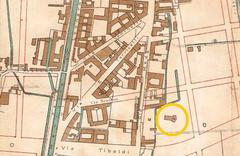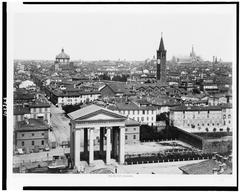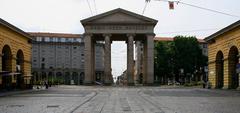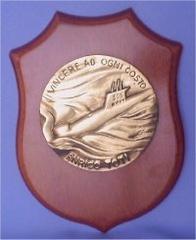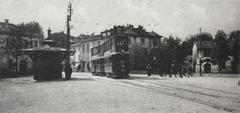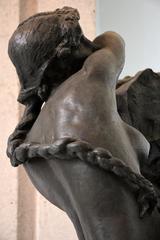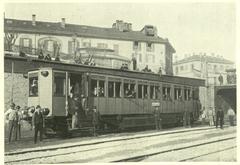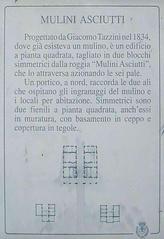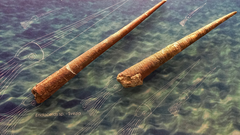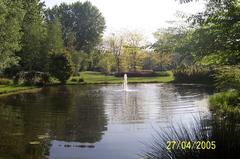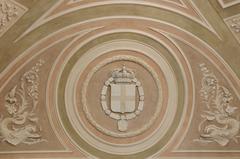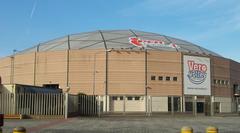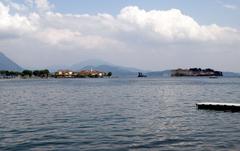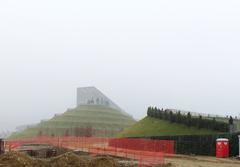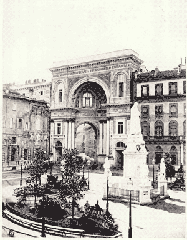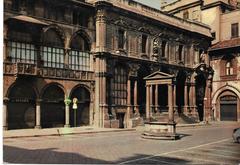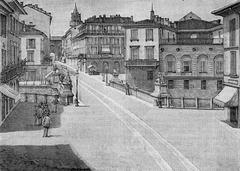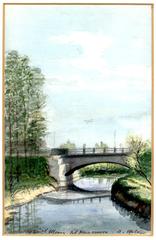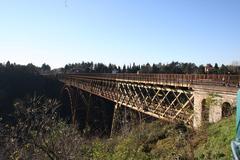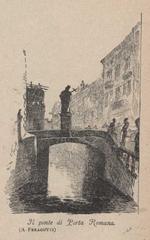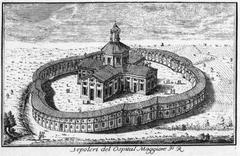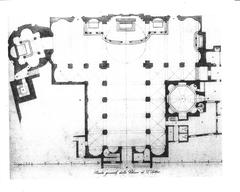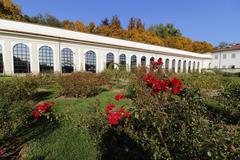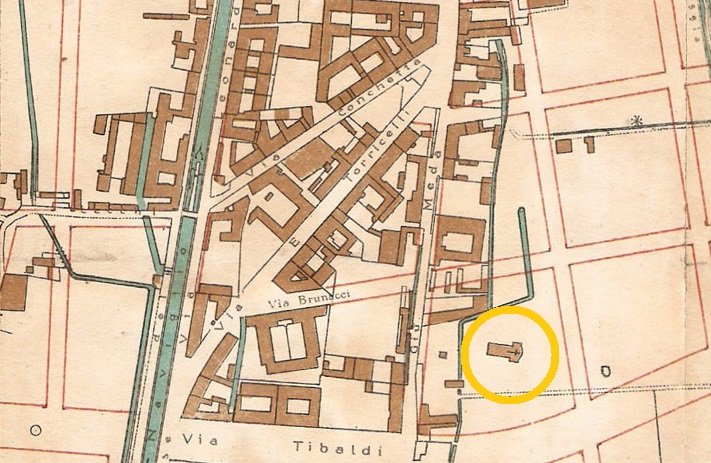
Naviglio Pavese Visiting Hours, Tickets, and Historical Sites in Monza, Italy
Date: 18/07/2024
Introduction
Naviglio Pavese, located in Monza, Italy, is a historic canal that offers a unique blend of engineering marvels, cultural significance, and modern-day attractions. Originating in the 14th century under the direction of the Visconti family, the canal was envisioned as a pivotal network for trade and transportation, connecting Milan to Pavia. Over the centuries, it saw contributions from notable figures such as Leonardo da Vinci, who designed innovative locks and water management systems during the Renaissance, and Napoleon Bonaparte, who ordered its completion in the early 19th century. The canal’s rich history, combined with its architectural highlights and cultural importance, makes it a fascinating destination for both history enthusiasts and casual travelers (Navigli Lombardi, Leonardo da Vinci’s Engineering, History.com).
Today, Naviglio Pavese is more than just a historical landmark; it has become a vibrant area that attracts visitors with its picturesque views, lively cultural scene, and diverse recreational activities. Whether you’re interested in exploring its architectural marvels, enjoying the local cuisine, or participating in cultural events and guided tours, Naviglio Pavese offers a comprehensive experience that caters to a wide range of interests. This guide aims to provide detailed information on the canal’s history, visitor tips, and modern-day attractions, ensuring you have all the necessary details for a memorable visit (Naviglio Pavese Today, Cultural Heritage of Naviglio Pavese).
Table of Contents
- Introduction
- History of Naviglio Pavese
- Visitor Information
- Modern-Day Attractions
- FAQ
- Conclusion
- References
History of Naviglio Pavese
Origins and Early Development
The Naviglio Pavese is a historic canal in the Lombardy region of Italy, connecting Milan to Pavia. Its origins date back to the 14th century when the Visconti family, rulers of Milan, envisioned a network of canals to facilitate trade and transportation. The construction of the Naviglio Pavese began in 1359 under the direction of Galeazzo II Visconti. However, the project faced numerous interruptions and was not completed until the early 19th century (Navigli Lombardi).
Renaissance and Engineering Feats
During the Renaissance, the canal system in Lombardy saw significant advancements, largely due to the contributions of Leonardo da Vinci. Da Vinci, who was employed by Ludovico Sforza, Duke of Milan, in the late 15th century, designed innovative locks and water management systems that improved the functionality of the canals. His work on the Naviglio Pavese and other canals in the region exemplified the era’s blend of art, science, and engineering (Leonardo da Vinci’s Engineering).
Napoleonic Era and Completion
The construction of the Naviglio Pavese was revitalized during the Napoleonic era. Napoleon Bonaparte, recognizing the strategic and economic importance of the canal, ordered its completion. The final stretch of the canal was completed in 1819, under the supervision of engineer Giovanni Antonio Lecchi. This completion marked a significant milestone in the region’s infrastructure, enhancing the connectivity between Milan and Pavia (Napoleon and Italian Canals).
Industrial Revolution and Economic Impact
The 19th century saw the Naviglio Pavese play a crucial role in the industrialization of Lombardy. The canal facilitated the transport of raw materials and finished goods, contributing to the growth of industries in Milan and Pavia. Factories and warehouses sprang up along the canal’s banks, transforming the region into an industrial hub. The canal’s significance during this period is underscored by the increase in trade volume and the economic prosperity it brought to the area (Industrial Revolution in Italy).
Decline and Modern Revival
With the advent of railways and road transport in the late 19th and early 20th centuries, the importance of the Naviglio Pavese diminished. The canal fell into disuse, and its infrastructure deteriorated. However, the late 20th and early 21st centuries have seen a revival of interest in the canal, driven by efforts to preserve its historical and cultural significance. Restoration projects have been undertaken to rehabilitate the canal and its surroundings, transforming it into a popular destination for tourists and locals alike (Naviglio Pavese Restoration).
Cultural Significance
The Naviglio Pavese is not just a feat of engineering but also a cultural landmark. It has inspired numerous artists, writers, and filmmakers over the centuries. The canal and its picturesque surroundings have been depicted in various works of art, capturing the essence of Lombardy’s landscape and heritage. The Naviglio Pavese continues to be a source of inspiration and a testament to the region’s rich history (Cultural Heritage of Naviglio Pavese).
Architectural Highlights
Several architectural landmarks along the Naviglio Pavese reflect its historical significance. Notable structures include the Conca Fallata, a lock designed by Leonardo da Vinci, and the Darsena di Pavia, a historic dock that served as a crucial point for loading and unloading goods. These structures exemplify the blend of functionality and aesthetic appeal that characterizes the canal’s architecture (Architectural Landmarks).
Visitor Information
Visiting Hours and Tickets
Naviglio Pavese is accessible to the public year-round. However, specific attractions along the canal, such as museums and guided tours, may have varying visiting hours and ticket prices. It is advisable to check the official websites or contact local tourist information centers for the most accurate and up-to-date information.
Accessibility and Travel Tips
Naviglio Pavese is easily accessible by public transport, with several bus and train routes connecting it to major cities in Lombardy. For those driving, there are parking facilities available nearby. The canal area is pedestrian-friendly, making it ideal for leisurely walks and sightseeing.
Nearby Attractions
While visiting Naviglio Pavese, consider exploring other historical sites in Monza and the surrounding region. Nearby attractions include the Monza Cathedral, the Royal Villa of Monza, and the expansive Monza Park, which offers a range of outdoor activities.
Special Events and Guided Tours
Naviglio Pavese hosts various cultural events and festivals throughout the year, celebrating its rich heritage. Guided tours are available, offering in-depth insights into the canal’s history and significance. These tours can be booked through local tour operators or online platforms.
Modern-Day Attractions
Today, the Naviglio Pavese is a vibrant area that attracts visitors with its blend of history, culture, and modern amenities. The canal is lined with cafes, restaurants, and shops, offering a unique experience that combines the old and the new. Visitors can enjoy leisurely walks along the canal, boat tours, and various cultural events that take place throughout the year. The Naviglio Pavese has successfully reinvented itself as a dynamic and attractive destination, preserving its historical essence while embracing contemporary trends (Naviglio Pavese Today).
FAQ
Q: What are the visiting hours for Naviglio Pavese?
A: Naviglio Pavese is accessible year-round, but specific attractions along the canal may have varying visiting hours. Check official websites for the most accurate information.
Q: How much are the tickets for Naviglio Pavese?
A: Ticket prices for attractions along the Naviglio Pavese vary. It is best to consult local tourist information centers or official websites for detailed pricing.
Q: Are there guided tours available for Naviglio Pavese?
A: Yes, guided tours are available and can be booked through local tour operators or online platforms.
Q: What are some nearby attractions to Naviglio Pavese?
A: Nearby attractions include the Monza Cathedral, the Royal Villa of Monza, and Monza Park.
Q: Is Naviglio Pavese accessible by public transport?
A: Yes, Naviglio Pavese is well-connected by public transport, including bus and train routes.
Conclusion
Naviglio Pavese stands as a testament to the ingenuity and vision of its creators, from the Visconti family to Leonardo da Vinci and beyond. Its rich history spans centuries, marked by significant engineering feats, economic transformations, and cultural contributions. The canal played a crucial role in the industrialization of Lombardy during the 19th century, facilitating trade and boosting economic prosperity. Over the years, despite periods of decline, efforts to preserve and revive Naviglio Pavese have transformed it into a vibrant destination that seamlessly blends historical essence with contemporary trends (Naviglio Pavese Restoration, Industrial Revolution in Italy).
Today, visitors to Naviglio Pavese can enjoy a variety of activities, from leisurely walks along the canal to exploring nearby attractions like the Monza Cathedral and Monza Park. The canal’s accessible location, coupled with its rich cultural and architectural heritage, makes it an ideal destination for travelers seeking a unique and engaging experience. Whether you’re captivated by its historical significance or drawn to its modern-day amenities, Naviglio Pavese offers something for everyone. To stay updated on the latest events and travel tips, be sure to check out local resources and follow on social media (Navigli Lombardi, Lonely Planet).
References
- Navigli Lombardi. (n.d.). Retrieved from https://www.naviglilombardi.it
- Leonardo da Vinci’s Engineering. (n.d.). Retrieved from https://www.leonardodavinci.net
- History.com Editors. (n.d.). Napoleon Bonaparte. Retrieved from https://www.history.com/topics/napoleon-bonaparte
- Britannica, T. Editors of Encyclopaedia. (n.d.). Industrial Revolution. Retrieved from https://www.britannica.com/event/Industrial-Revolution
- Cultural Heritage Online. (n.d.). Retrieved from https://www.culturalheritageonline.com
- Lonely Planet. (n.d.). Retrieved from https://www.lonelyplanet.com
- Lombardia Beni Culturali. (n.d.). Retrieved from https://www.lombardiabeniculturali.it
